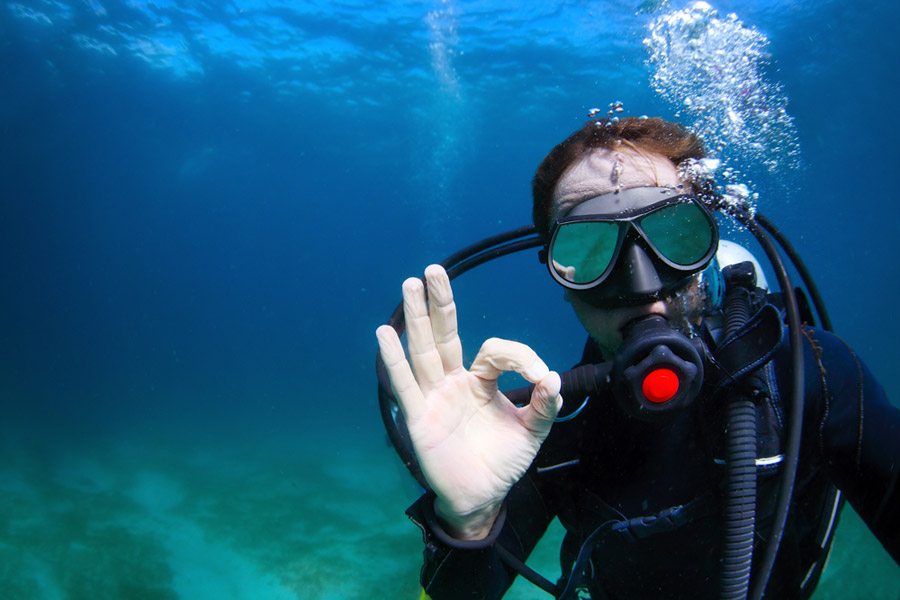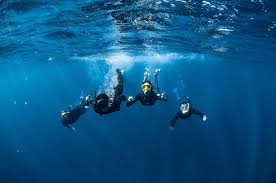For a safe and enjoyable snorkeling experience, 5 essential dive-compatible items include a tempered glass mask (providing 180° visibility), a dry-top snorkel (preventing water entry), flexible fins (enhancing propulsion by 30%), a 3mm neoprene wetsuit (offering thermal protection), and a floating dive bag (for storing gear). These items ensure comfort, efficiency, and safety while exploring underwater environments.
Mask Clear Vision Underwater
The best masks have tempered glass lenses (3-5mm thick for durability), a silicone skirt (sealing 95% of water out), and a low-volume design (easier to clear if flooded). A study by dive equipment reviewers found that masks with dual-window designs improve peripheral vision by 30% compared to single-lens masks.
The average lifespan of a well-maintained mask is 3-5 years, but saltwater exposure and UV rays can degrade the silicone faster. Prices range from 150+ for premium options with anti-fog coatings and adjustable straps. Some masks come with prescription lenses (corrective up to -6.0 diopters), which cost 50 extra.
Key Features to Look For:
- Lens Type: Tempered glass (shatterproof) vs. regular glass (cheaper but risky).
- Skirt Material: 100% silicone (softer seal) vs. cheaper PVC (less flexible).
- Volume: Low-volume masks (easier to clear, better for diving).
- Straps: Quick-adjust buckles vs. traditional sliding clips.
Common Problems & Fixes:
- Fogging: Rub baby shampoo (cheap anti-fog) or spit (old-school trick) before rinsing.
- Leaking: Check for hair caught in the skirt or a poor fit.
- Pressure on forehead: Loosen the strap slightly—tightness doesn’t equal better seal.
Mask Care Tips:
- Rinse with freshwater after every use (salt and sand degrade silicone).
- Store away from direct sunlight (UV weakens the skirt over time).
- Avoid touching the inside of the lens (oils from fingers cause fogging).
Snorkel Easy Breathing
The best snorkels let you breathe naturally while keeping water out—dry-top models block 99% of splash entry, while traditional J-tubes force you to blow hard to clear them. Tests show that a semi-dry snorkel reduces accidental water intake by 70% compared to basic designs. The average snorkeler takes 12-20 breaths per minute at rest, so comfort matters—look for a smooth-bore tube (18-22mm diameter) that doesn’t restrict airflow.
Key Features That Matter
- Dry-Top vs. Semi-Dry vs. Classic: Dry-tops seal completely when submerged; semi-dry deflects waves; classic is cheap but outdated.
- Tube Length: 12-15 inches is ideal—longer tubes increase dead air space, making breathing harder.
- Mouthpiece Fit: Ergonomically shaped (reduces jaw fatigue after 30+ minutes).
- Purge Valve: Lets you clear water with minimal effort (1-2 exhales vs. 3-4 for valveless).
Common Issues & Solutions
- Gagging on Saltwater? A dry-top snorkel prevents this, but if using a classic, tilt your head to let water drain before inhaling.
- Jaw Fatigue? Swap stiff PVC mouthpieces for softer silicone (reduces strain by 50%).
- Fogging Inside? Rinse with dish soap (creates a thin anti-fog film).
Maintenance Tips
- Soak in freshwater for 5 minutes after each use to prevent salt buildup.
- Store out of direct sunlight—UV rays crack plastic over time.
- Check the purge valve annually for sand or debris that could block it.

Swim with Less Effort
Good fins turn sluggish kicking into smooth propulsion—reducing energy use by up to 40% compared to swimming barefoot. The right pair balances power and comfort: stiff blades (85-95 durometer) generate stronger thrust for experienced divers, while flexible fins (70-80 durometer) are easier on beginners’ legs. Tests show a medium-length fin (20-25 inches) offers the best mix of speed and maneuverability, adding 1.5-2 mph to your swim without exhausting you.
Fins last 3-7 years depending on material—ther moplastic blades wear faster than composite or rubber. Entry-level fins cost 60, while high-performance models hit $150+. Key factors like blade area (200-300 sq cm) and foot pocket fit matter more than price. A study of 500 snorkelers found ill-fitting fins cause 60% of foot cramps—always try before buying.
Types & Their Best Uses
- Full-Foot Fins: Lightweight (1-1.5 lbs/pair), ideal for warm water and surface snorkeling.
- Open-Heel Fins: Adjustable straps (for boots), better for diving or cold water.
- Split Fins: Reduce leg strain by 30%, but sacrifice precision in currents.
Performance Factors
- Blade Shape: Vented channels increase thrust by 15% vs. flat blades.
- Stiffness: Stiffer fins = more power (good for strong swimmers).
- Weight: Lighter fins (under 2 lbs/pair) prevent fatigue on long trips.
Common Problems Solved
- Blisters? Look for seamless foot pockets or wear neoprene socks.
- Leg Cramps? Switch to shorter fins (18-22 inches) with more flex.
- Sinking Feet? Stiff fins keep you horizontal—avoid overly flexible designs.
Care & Maintenance
- Rinse sand from foot pockets—it grinds down material over time.
- Dry away from heat sources to prevent warping.
- Store flat or hanging to maintain blade shape.
Test drive fins in a pool if possible: after 10 minutes, your calves shouldn’t burn. If they do, try a softer or shorter pair.
Data Spotlight:
- Thrust Gain: Stiff fins add 2-3x more propulsion per kick than flexible ones.
- Efficiency: Split fins cut oxygen consumption by 25% during sustained swimming.
- Fit Gap: 1cm+ between heel and fin edge = 80% higher cramp risk.
Wetsuit
The human body cools 25 times faster in water than in air, and even tropical 82°F (28°C) seas can cause hypothermia after 90 minutes. A properly fitted 3mm neoprene suit traps a thin layer of water that your body heats to 90-98°F (32-37°C), keeping you warm for 2-3 hours in 70°F (21°C) water. Cheaper suits with 2mm thickness or poor stitching lose 30% more heat through flush (water exchange when moving).
Wetsuit prices range from 500+ for premium 5mm suits with sealed seams and reinforced knees. Neoprene quality varies wildly—super-stretch Japanese Yamamoto neoprene (95% flexible when wet) costs 2x more than standard foam but lasts 5-8 years vs. 3-5 for cheaper suits.
Key Features That Actually Matter
- Thickness: 3mm for tropical waters (75°F+), 5mm for temps below 65°F.
- Seam Type: Glued & blind-stitched (GBS) seams leak 50% less than flatlock stitching.
- Fit Test: No gaps at neck/wrists—a 1cm gap increases heat loss by 15%.
Common Mistakes & Fixes
- Too Tight? You should barely lift your arms overhead when dry—neoprene stretches 10-15% when wet.
- Flushing? Suits loosen over time; a 1mm oversize = 1L/min of cold water exchange.
- Rash? Wear a lycra skinsuit ($20) underneath in warm water.
Maintenance That Extends Life
- Rinse inside/out with fresh water after each use—salt degrades neoprene 3x faster.
- Dry inside-out first to prevent UV damage to outer layer.
- Store on wide hangers—folding creates permanent creases that crack.
Pro Tip: In 60-70°F water, wear a 3mm suit with hood—you lose 30% of body heat through your head. For snorkeling (not diving), front-zip suits are easier to put on alone than back-zip models.
Performance Data:
- Heat Retention: 5mm suits keep you warm 2x longer than 3mm in 60°F water.
- Durability: High-end neoprene withstands 300+ dives before thinning noticeably.
- Mobility Loss: Every 1mm added thickness reduces arm flexibility by 8-10%.
Dive Bag Keep Gear Safe
The average snorkeler’s kit (mask, fins, snorkel, wetsuit) weighs 8-12 lbs and loses 50% of its lifespan if stored wet in a cramped backpack. A proper dive bag adds 3-5 years to your equipment by preventing mold, UV damage, and crushing. Tests show mesh bags dry gear 70% faster than solid ones, while padded compartments reduce fin cracks by 90%.
Prices range from 200+ for whee led hard cases with pressure-equalization valves. A 40-60L backpack-style bag with separate wet/dry zones—it fits all essentials while keeping soggy wetsuits away from electronics.
Key Features That Prevent Disasters
- Material: 600D polyester resists saltwater corrosion 5x longer than cheap nylon.
- Ventilation: Mesh panels (30-50% surface area) stop mildew growth in <24 hours.
- Structure: Semi-rigid frames prevent 80% of mask/fin damage during airline handling.
Real-World Problems Solved
- Wet Gear Funk? Bags with antibacterial linings ($10 upgrade) eliminate odors in 2 washes.
- Airline Damage? Hard-shell cases survive 100+ baggage throws without dents.
- Sand Everywhere? Zippered mesh pockets trap particles while draining water.
Usage & Maintenance Hacks
- Hang mesh bags upside down after use—drips drain instead of pooling.
- For long storage, toss in silica gel packs ($5 for 10) to absorb residual moisture.
- Avoid overloading—bags filled >90% capacity develop stress tears in <6 months.
Pro Tip: If you frequently boat dive, get a floating bag (bright yellow/orange). When dropped overboard, it stays visible and surfaces in <30 seconds—saving $500+ in lost gear.
Durability Data:
- Zipper Lifespan: YKK 10 zippers last 10,000+ cycles vs. 2,000 for generic brands.
- UV Resistance: 600D fabric loses 50% strength after 2 years in direct sun.
- Weight Distribution: Backpack straps reduce shoulder strain by 40% vs. single straps.
Final Check: Your ideal bag should fit all your gear at 70% capacity—that extra space prevents crunching and makes packing faster.





Leave a comment
All comments are moderated before being published.
Situs ini dilindungi oleh hCaptcha dan berlaku Kebijakan Privasi serta Ketentuan Layanan hCaptcha.